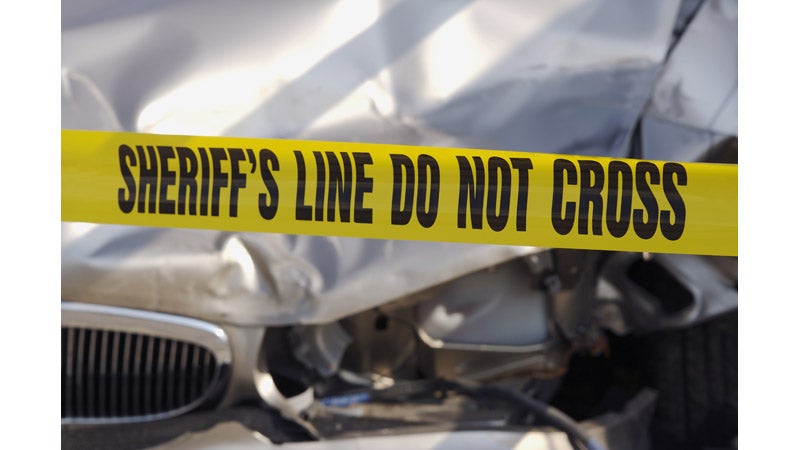Work to restore and maintain area coastline gains steam
Published 12:00 am Thursday, October 25, 2007
By KEVIN CHIRI
Editor and Publisher
LAPLACE – “Beach Sweep 2007,” which took place all around regional Louisiana lakes on Saturday, September 15, was just one of many approaches being taken by the Lake Pontchartrain Basin Foundation (LPBF) to preserve the lakes, as well as the coastal regions in the state.
Environmental Education Specialist JoAnn Burke spoke to the LaPlace Rotary Club last week, prepping the group as one organization which helped out with “Beach Sweep 2007.”
The Rotary Club joined with the St. John Business Association and Keep St. John Beautiful, as well as many volunteers to make “Beach Sweep 2007” a big success.
But Beach Sweep is just one small way that the Basin Foundation is continuing their efforts to keep Lake Pontchartrain clean for everyone. And as Burke told the Rotary Club, the mission of LPBF has become much more than just a clean Lake Pontchartrain.
“We had been using bumper stickers for years that said ‘Save Our Lake,’ but now we are making new ones that say ‘Save Our Coast.’ The problem facing Louisiana is much bigger than our lakes, which we have done a very good job of improving in terms of water quality. Now we are looking at the entire Louisiana coastline, realizing how important it is to preserve it, and rebuild damaged areas, to help us should another hurricane like Katrina come this way,” she explained.
Burke said that ever since the Basin Foundation was established in 1989, they have worked for years to establish a top reputation as experts on the lake water quality. But now the recognition as coastal experts is also growing.
“Levees alone cannot protect us from storms,” Burke said. “Louisiana must restore its Coastal Lines of Defense, which is part of the natural environment. This will require restoration of land, and returning land back to its past natural health.”
She explained that there are 11 lines of defense against storms, with the first five actually being manmade. They are the Offshore Shelf, the Barrier Islands, the Sound, Marshes and the Natural Ridge.
After that, things such as highways, flood gates, levees, pump stations, elevated buildings and even evacuation routes are considered levels of protection.
LPBF has a 10-step plan to restore the coast, including the following:
** Restore the land bridge between the MRGO and Lake Borgne.
** Restore Bayou la Loutre Ridge.
** Restore the Chandeleur Islands.
** Restore the Jefferson Parish shoreline.
** Restore fresh water flow at Violet, La.
** Rebuild Biloxi marsh land bridge South.
** Restore the Breton land bridge.
** Rebuild marsh and ridges in New Orleans East.
** Rebuild Biloxi marsh land bridge North.
** Restore the Maurepas land bridge.
These are the big projects the Basin Foundation is now looking at, but meanwhile they have done much to bring the lake quality in Pontchartrain to a much improved level. Noting that Lake Pontchartrain is no more than 12 feet deep in most areas, she said it has become much improved since laws were passed to stop shell dredging.
“Dredging kept the water stirred up, so whatever human or animal waste you had in the lake was always stirred up as well,” she said.
Burke said that most people are surprised to know that the South Shore of the lake is cleaner than the North Shore, since the South Shore has a regionalized sewer treatment plant, but the North Shore has many small plants, and still a lot of septic treatment plants that empty into canals and waterways, that all eventually make their way to the lake.
“One of the other problems we found when we first started working was that so many farms on the North Shore had animals going to the bathroom 10 times a day, and all that waste eventually made it to the lake. So we got many farmers to put lagoons on their farms and that has helped a lot,” she said.
Since 2001, LPBF has a regular schedule of testing 10 different sites around the lake to check water quality, which continually comes up very good.
She warned that most people aren’t aware that the only time the lake isn’t really safe to swim in would be after a rain, since there is so much runoff from the land.
“We tell people to wait three days after a good rain before they swim in the lake,” she said. “Bacteria counts are always up after rain.”
She added that a healthy Lake Pontchartrain actually helped a lot following Katrina since it absorbed a lot of the pollution that was washing off the land, but absorbed it very well.
“By November, our water quality in the lake was back to pre-Katrina levels,” she said.
Burke has been an environmental education specialist with the Basin Foundation for six years. For more information on their work, go to www.saveourlake.org.





